Life expectancy in Italy is among the highest in Europe, but it fell at least temporarily in 2020 because of deaths due to Covid-19. While the Italian health system generally provides good access to high-quality care, the pandemic highlighted important structural weaknesses, including years of low investment in the health workforce and the health information infrastructure.
The pandemic stimulated many innovative practices in Italy, such as the rollout of special units for continuity of care, which could be expanded to build a more resilient healthcare system.
Italy’s health status
Life expectancy in Italy in 2020 was almost two years higher than the EU average, but it fell by 1.2 years because of deaths due to Covid-19. Even before the pandemic, gains in life expectancy had slowed considerably since 2010 compared with previous decades, partly due to increased mortality rates from respiratory diseases among older people.
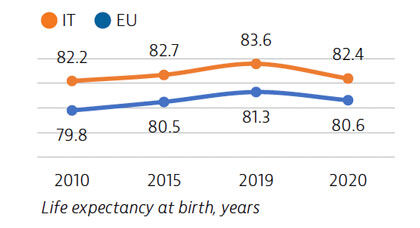
Risk factors
Risk factors for health are major drivers of mortality in Italy. While tobacco consumption has fallen among adults over the past decade, nearly 30% of 15-year-olds reported that they had smoked in the past month in 2018. Physical inactivity among both adolescents and adults is also relatively high in Italy, contributing to overweight and obesity.
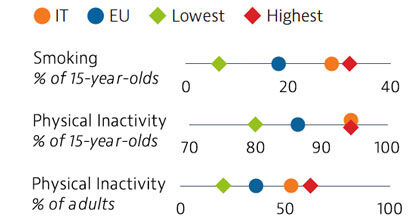
Italy’s health system
Spending on health in Italy grew slowly in the decade before the pandemic. In 2019, health expenditure was substantially lower than the EU average, both in per capita terms and as a share of GDP. About 74% of health spending was publicly funded in 2019 – a lower share than the EU average of 80%. In response to the Covid-19 pandemic, the Italian government allocated additional funding of €3.7bn in 2020 and €1.7bn in 2021 to the health system – an increase of 3.3% and 1.7% over the original funding plan.
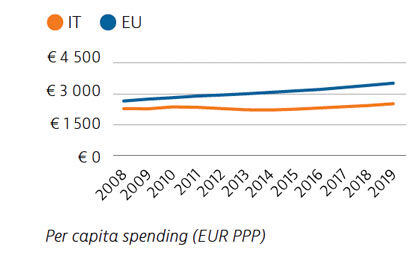
Effectiveness
Mortality from preventable and treatable causes was lower in Italy than the EU average in 2018, indicating lower prevalence of many risk factors to health compared to the rest of the EU and a healthcare system that is generally effective in treating patients with life-threatening conditions.
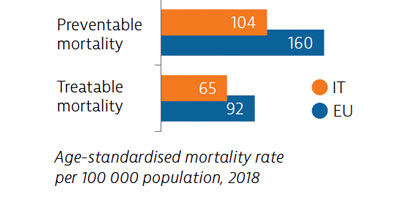
Accessibility
Although access to health care is generally good in Italy, the Covid-19 pandemic significantly hampered access to care: 23% of the population reported some forgone care during the first 12 months of the pandemic – slightly more than the EU average of 21%.
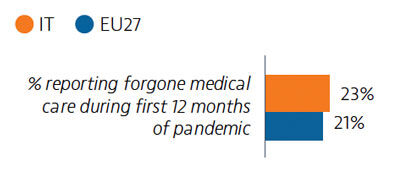
Resilience
Italy was among the EU countries hardest hit by Covid-19 in terms of death rates, particularly during the first wave. Like other EU countries, Italy accelerated its vaccination campaign in the first half of 2021 as the main way out of the pandemic, while continuing to implement other measures to protect its population and reduce pressure on its hospitals.

OECD/European Observatory on Health Systems and Policies (2021), Italy: Country Health Profile 2021, State of Health in the EU, OECD Publishing, Paris/European Observatory on Health Systems and Policies, Brussels











